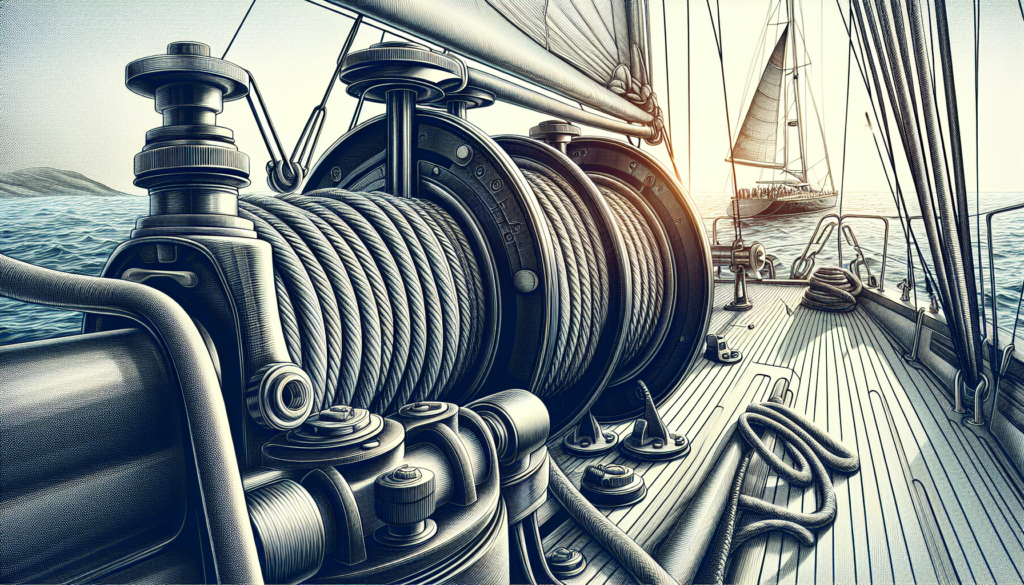Sailing Winches: A Comprehensive Guide to Functionality and Types
When it comes to sailing, every component plays a crucial role in ensuring a smooth and efficient voyage. Among these components, sailing winches stand out as essential tools that aid in controlling the sails and navigating the vessel through wind and water. Whether you’re a seasoned sailor or a novice enthusiast, understanding the intricacies of sailing winches can significantly enhance your sailing experience. In this comprehensive guide, we delve into the world of sailing winches, exploring their functionality, types, historical significance, and modern applications. Join us on this exciting journey as we unravel the mysteries behind these indispensable devices.
The Evolution of Sailing Winches
Historically, sailing winches have been instrumental in the development of sailing vessels, allowing sailors to harness the power of the wind for propulsion. The earliest winches were simple hand-operated devices that consisted of a drum or barrel around which a rope could be wound. These winches were primarily used for hoisting sails, adjusting rigging, and performing other tasks that required mechanical advantage.
Over time, advancements in technology led to the development of more sophisticated winches, such as the self-tailing winch, which features a mechanism that automatically grips the rope as it is wound around the drum. This innovation made it easier for sailors to handle the winch single-handedly, significantly improving efficiency and safety on board. Today, sailing winches come in a variety of designs and configurations, each tailored to specific sailing applications.
The Functionality of Sailing Winches
At its core, a sailing winch is a mechanical device that is used to control the tension and position of sails on a sailing vessel. By providing a mechanical advantage, winches allow sailors to exert greater force on the sails, enabling them to adjust the sail area, trim the sails for optimal performance, and respond to changing wind conditions effectively. Winches are typically mounted on the deck of the vessel and are connected to various sail controls, such as halyards, sheets, and furling lines.
The operation of a sailing winch involves turning a handle or crank, which rotates the drum around which the rope is wound. As the rope is pulled in or let out, the winch multiplies the force applied by the sailor, making it easier to handle the sails. Depending on the size and configuration of the winch, it can provide different gear ratios to suit different sailing conditions and sail sizes.
Types of Sailing Winches
There are several types of sailing winches available on the market, each designed for specific purposes and applications. Some of the most common types of sailing winches include:
Manual Winches
Manual winches are the traditional type of winches that rely on human power to operate. These winches require the sailor to turn a handle or crank to rotate the drum and adjust the tension on the ropes. Manual winches are still widely used on sailing vessels of all sizes, as they are reliable, easy to maintain, and cost-effective.
Electric Winches
Electric winches are powered by an electric motor that automates the process of winding and unwinding the rope. These winches are ideal for larger sailing vessels or for sailors who require extra power to handle heavy loads. Electric winches are easy to operate and can significantly reduce the physical strain on sailors during long passages or challenging sailing conditions.
Self-Tailing Winches
Self-tailing winches feature a built-in mechanism that automatically grips the rope as it is wound around the drum. This allows sailors to operate the winch single-handedly, as the rope is held securely in place without the need for manual intervention. Self-tailing winches are popular for their ease of use and improved safety, especially in high-stress situations.
Hydraulic Winches
Hydraulic winches use hydraulic power to operate, providing smooth and precise control over the tension and position of the sails. These winches are commonly found on larger sailing vessels or racing yachts, where quick and accurate adjustments are essential for performance. Hydraulic winches offer superior power and control, making them a popular choice among professional sailors and racing teams.
Winch Maintenance and Care
Proper maintenance of sailing winches is essential to ensure their longevity and optimal performance. Regular inspection, cleaning, and lubrication of the winch components are necessary to prevent wear and corrosion. It is also important to check the ropes and lines for signs of wear and replace them as needed to avoid accidents or equipment failure.
When storing the vessel for an extended period, it is recommended to remove the ropes from the winches and store them in a dry and secure location. This will prevent the ropes from deteriorating or causing damage to the winch components. Additionally, periodic servicing by a professional technician can help identify any potential issues and ensure that the winches are operating at peak efficiency.
Conclusion
In conclusion, sailing winches are indispensable tools that play a vital role in controlling the sails and maneuvering sailing vessels effectively. Understanding the different types of winches, their functionality, and maintenance requirements can greatly enhance the sailing experience for sailors of all levels. Whether you’re a recreational sailor, a seasoned racer, or a professional mariner, having a good knowledge of sailing winches is essential for safe and enjoyable sailing adventures. So, the next time you set sail, take a moment to appreciate the humble winch and its invaluable contribution to the art of sailing.



